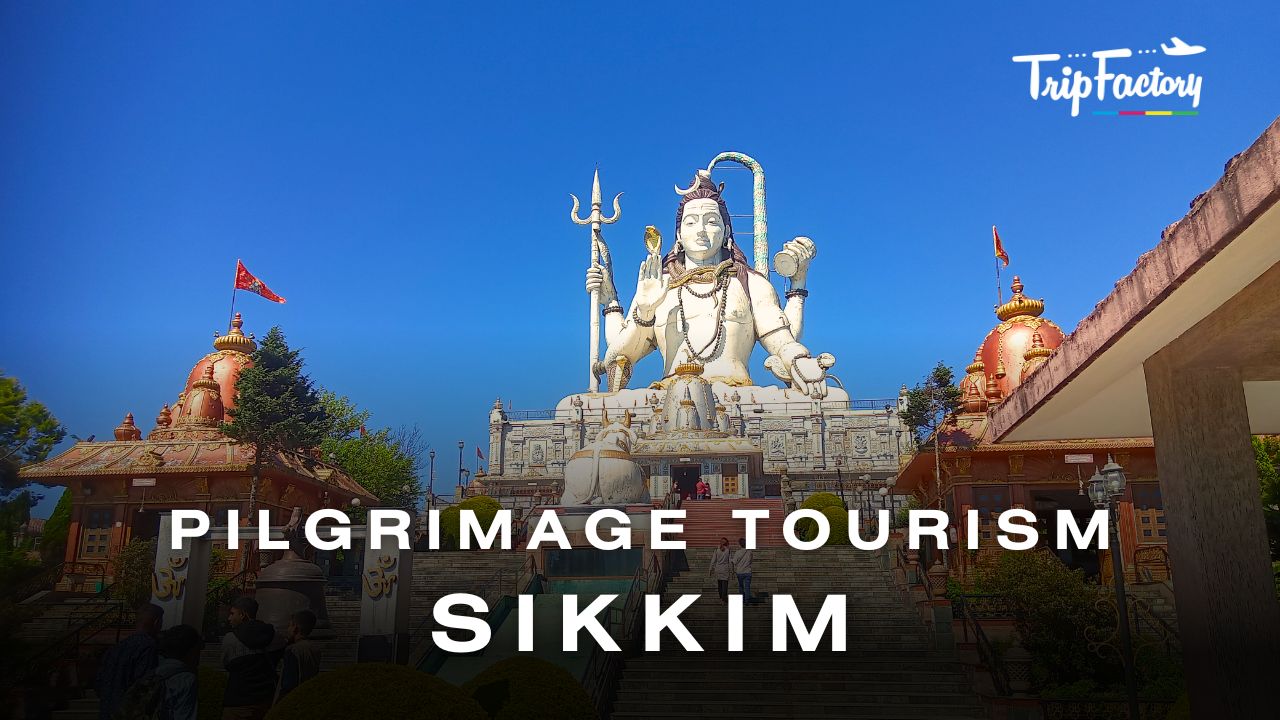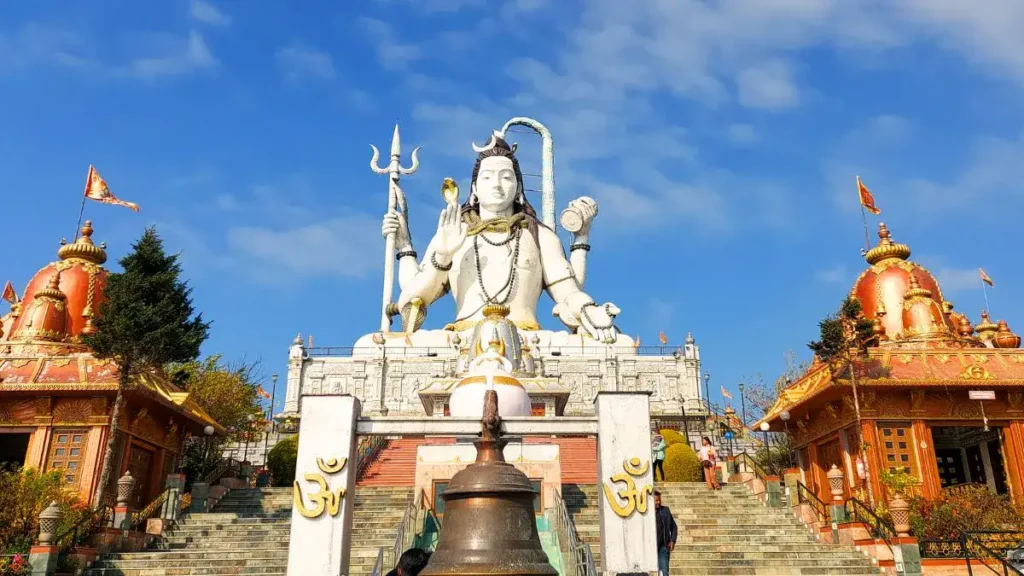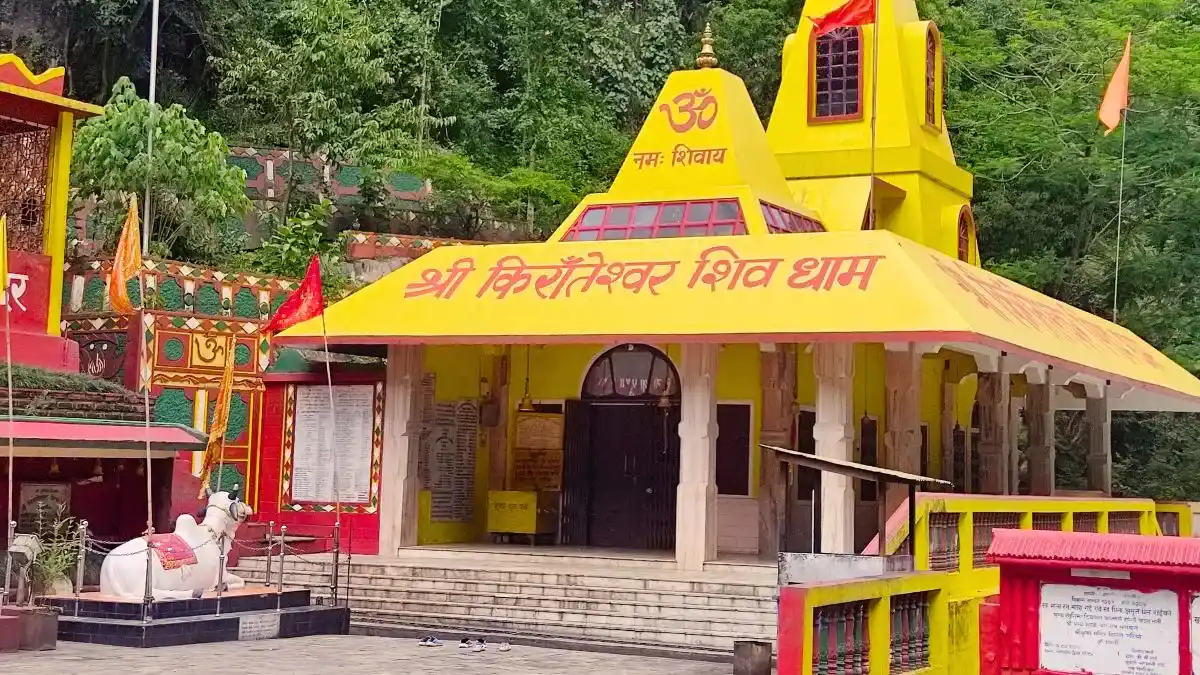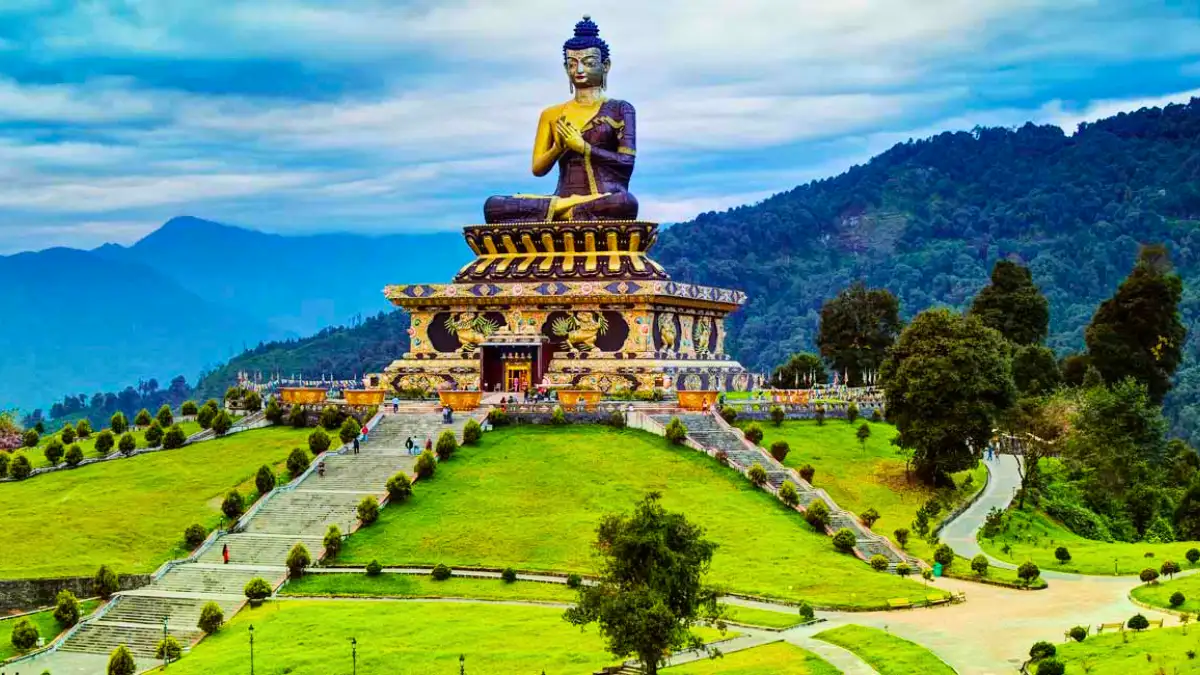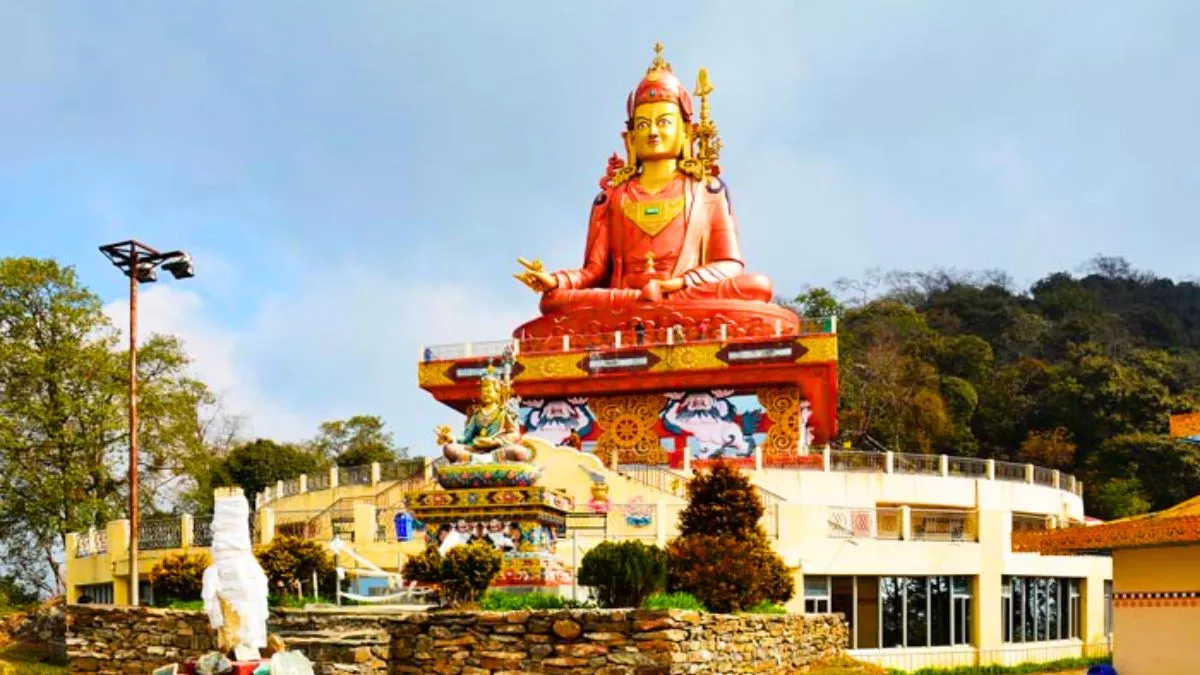Sikkim, located in Northeastern India, is the smallest and least populated state in the Eastern Himalayas. It is known for its biodiversity, alpine and subtropical climates, and Kangchenjunga, the world’s third-highest mountain.
Gangtok is its capital and largest city, and the Khangchendzonga National Park covers 35% of the state. Established in the 17th century, Sikkim joined British India in 1890 and maintained its protectorate status with the Republic of India.
It is a multilingual and multiethnic state, with official languages including Lepcha, English, Nepali, and Sikkimese.
Some popular Pilgrimage Sites in Sikkim :
Table of Contents
Popular Pilgrimage Sites in Sikkim
Solophok Chardham Namchi
Located on top of Solophok Hill in South Sikkim, this recently erected Pilgrimage-cum-Cultural Center aims to boost Religious Tourism in the state. View the 26½ m tall, seated statue of Lord Shiva that indicates the main temple’s location for kilometers.
The complex, spanning over seven acres, has twelve Jyotirlingas and four Dhams, namely Badrinath, Jagannath, Dwarka, and Rameshwaram, in addition to this massive monument.
This magnificent Chardham impersonation in the peaceful landscape of Sikkim has grown to be one of the most popular tourist attractions in the state, particularly for Lord Shiva worshipers.
Things to do and See
There are a lot of additional well-known tourist attractions around Solophok Chardham that may spark your interest during your educational visit. The two well-known hikes, Tendong Hill and Maenam Hill are physically next to one another and are worth exploring.
For adventure lovers, the neighboring Maenam Wildlife Sanctuary and Tendong State Biodiversity Park are like the icing on the cake. Namchi is home to several stunning and well-known monasteries, including Serdup Choling Monastery, Doling Gompa, Ngadak Monastery, and Ralang Monastery, all of which demand a visit.
The enormous, self-promulgating Statue of the Buddhist Padmasambhava entices visitors to Samdruptse Hill so they may have a better look.
Kirateshwar Mahadev Temple Legship
Kirateshwar Mahadev Temple is a well-known Hindu pilgrimage destination that is situated between verdant woodlands and the shimmering River Rangit. It is stated that if you worship at this temple with all your heart, all your desires will come true.
Nonetheless, the temple receives a lot of traffic since it has three distinct prayer platforms where people may come to worship Lord Shiva, Lord Rama, and Goddess Durga. Kirateshwar Mahadev is purportedly the state’s oldest temple.
Because of its crucial involvement in the epic conflict, this holy shrine is also referenced in the Mahabharata. The annual festival of the Bala Chaturdesi, which takes place in November and December, is the temple’s primary draw.
Additionally, many devotees travel from near and far to celebrate Maha Shivaratri, a festival that takes place in the months of February or March and is considered auspicious.
Things to do and See
In addition to being devoted to Lord Shiva, the Kirateshwar Mahadev Temple has two shrines for the devotion of Lord Rama and Goddess Durga.
During the holidays, you may visit the temple and see Legship come to life as everyone celebrates with pleasure and excitement.
Buddha Park Ravangla
Buddha Park, which is serenely perched in a little tourist town in Sikkim’s southern region, is a destination that every traveler ought to see. Built in 2006 to commemorate Lord Gautama Buddha’s 2550th birthday, this well-known attraction is a significant landmark for the Buddhist community.
Ravangla was selected to have the 130-foot-tall monument erected. This exquisite beauty enclosed by a verdant eco garden contributes to the growth of Sikkim’s pilgrimage tourist industry.
Nearly all of Buddha Park is occupied by visitors, both local and foreign, who come to enjoy the memorial’s picturesque charms and the surrounding natural beauties. Cho Djo Lake is another feature inside the complex, making it much more worth seeing.
Things to do and see
This park is a sight to see, with verdant gardens all around, serene environs, and a spacious path for guests to use. You get a continuous view of the mountains and Cho Djo Lake from this location.
Because of the site’s immense spiritual significance, even the atmosphere gives visitors a heavenly feeling. There is a Buddhist conclave, a museum, and a meditation center next to the park.
Samdruptse Hill Namchi
Samdruptse Hill, also known as the “wish-fulfilling hill,” is a 45-meter tall monument of Guru Padmasambhava, also known as Guru Rinpoche, which has been blessing Sikkim for over 1,200 years.
The hill is 45 meters tall and offers a stunning view of the city, Mt. Kangchenjunga, and a blue sky. The hill is revered by local monks as a dormant volcano that can only be stopped by prayers.
The Sikkim State Government sponsored the construction of the statue, which took around seven years and was a remarkable engineering feat. In 1997, the Dalai Lama laid the foundational stone on the statue.
Things to do and See
The Samdruptse hill is surrounded by a number of tourist attractions, such as the well-known Shiva Mandir, which houses a massive statue of Lord Shiva and is a crucial component of the Solophok Chardham.
Hikers may indulge their sense of adventure by using the nearby, thrilling trails that go to Tendong Hill and Maenam Hill, with a detour to Tendong State Nature Park and the Maenam Wildlife Sanctuary.
In addition to these, Ralang Monastery, Doling Gompa, Ngadak Monastery, and Serdup Choling Monastery are just a few of the stunning monasteries in Namchi that one should not miss while visiting Samdruptse Hill.
Frequently Asked Questions
Which pilgrimage is famous in Sikkim?
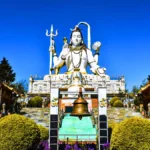
Solophok, Chardham
In addition to the Shiva statue, this pilgrimage center has twelve Jyotirlinga replicas, providing a single platform for devotees of Shiva. Kirateshwar was the incarnation of Lord Shiva in Indrakeel (present-day Sikkim). Thus, the people of Sikkim revere him locally as Lord Kirateshwar, because of this incarnation.
What is special in tourism of Sikkim?
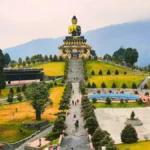
The northeastern Indian state of Sikkim is renowned for its spectacular natural beauty, which includes glistening lakes, verdant forests, and snow-capped mountains. The colorful festivals, mouthwatering food, and rich cultural legacy of Sikkim are additional well-known tourist attractions.
What is the most famous Hindu pilgrimage?
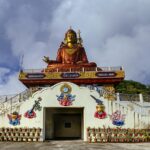
Holy Fairs: One of the holiest pilgrimages in Hinduism, the Kumbh Mela (also known as the “pitcher festival”) takes place four times every twelve years, with a different venue each time: Prayagraj, Haridwar, Nashik, and Ujjain.

